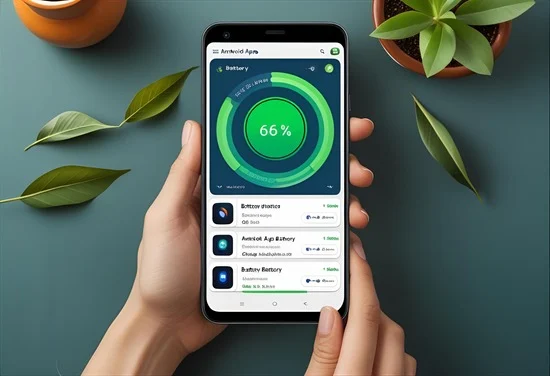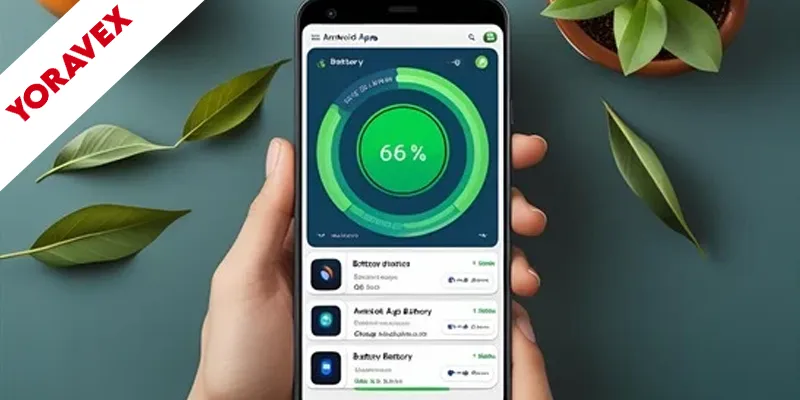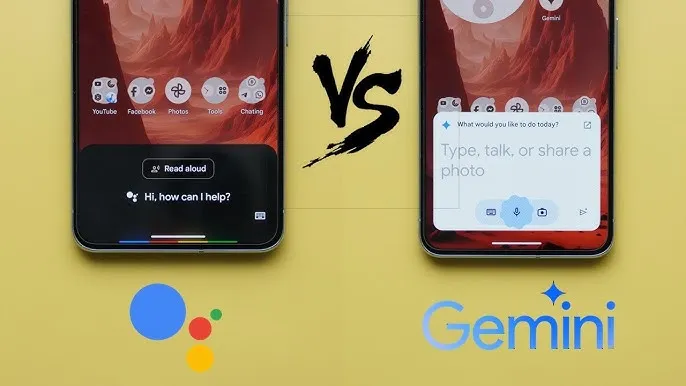You want your Android app battery optimization to deliver speed, longer battery life, and a lighter footprint. That means designing with efficiency from the start for Android app battery optimization: measure power use, trim wasteful network calls, and pick smarter sensors. Use the Fused Location Provider, cache aggressively, and batch background work. Give users an Eco mode and honest battery insights. Do this well and you’ll earn trust, retention, and a lighter footprint—now here’s where small choices make the biggest impact…
Key Takeaways
- Profile power with Android/Perfetto Energy Profilers to find wake locks, hotspots, and compare baselines after Android app battery optimization.
- Cut unnecessary work: cache, batch, and compress network calls; honor HTTP cache headers and ETags to support Android app battery optimization.
- Design energy-smart UIs: minimize recompositions, memoize state, disable animations in Battery Saver, and offload heavy work off the main thread.
- Optimize location and sensors: prefer coarse accuracy, Fused Location Provider, lower update frequency, throttle sampling, and batch reads.
- Schedule background tasks flexibly to align with low-power windows and offer an Eco Mode for user-controlled energy and data savings.

Why Sustainable App Design Matters
While sleek features often steal the spotlight, sustainable app design matters because Android app battery optimization directly impacts energy use, battery life, and emissions. You shape how often devices charge, how long sessions last, and how much electricity an app draws across millions of users. With Android app battery optimization, you reduce wasted cycles from inefficient coding and background tasks that contribute to 1–1.5% of global electricity usage.
Build energy-efficient apps that delay unnecessary work, optimize network calls, and respect Doze Mode to cut wakeups. Users charge less, which lowers CO₂ output and your app’s carbon footprint. Be transparent about battery usage; give clear insights so people can adjust settings and trust your intent. In a competitive market, eco-friendly mobile choices win loyalty, ratings, and retention.
Measuring Power Usage in Android Apps
Because you can’t optimize what you don’t measure, start by profiling your app’s real-time behavior and tying it to power costs for Android app battery optimization. Use Android Profiler to watch CPU, memory, and network timelines; spikes often reveal hidden power draw. Switch to Energy Profiler to inspect wake locks and background services, then remove or throttle the offenders to boost Android app battery optimization and battery life.
For deeper measuring power usage, record traces with Perfetto. Correlate threads, schedulers, and I/O with network and sensor activity to locate hotspots. Audit location calls: trim frequency, cache results, and avoid continuous GPS; unnecessary updates can drain batteries up to 23x faster. Batch uploads, compress payloads, and prefer syncing under low-power or unmetered conditions. Re-test after each change and compare baselines.
Energy-Smart UI and Interaction Patterns
You’ve measured where energy goes; now shape the UI to spend less of it with Android app battery optimization in mind. Build an energy-smart ui that treats every render as a cost. In mobile apps, recomposition churn wastes CPU/GPU cycles and shortens battery life, so design components that update only when necessary and adapt interactions to current power conditions. The payoff is lower environmental impact and smoother experiences.
- Lift state and memoize aggressively. Stabilize parameters, use remember/derivedStateOf, and split composables to curb unnecessary recompositions.
- Tune Jetpack Compose rules. Mark stable types, prefer immutable models, and hoist expensive calculations off the main thread to reduce rendering work for Android app battery optimization.
- Respect Battery Saver. Disable animations/transitions, prefer lightweight visuals, and degrade gracefully without jank.
- Monitor UI performance. Track recomposition counts, frame times, and overdraw; fix hotspots and verify wins with profiling.
Optimizing Location, Sensors, and Permissions
Even modest location and sensor choices can make or break battery life, so design for precision only when it truly adds value to Android app battery optimization. Start by optimizing location defaults to coarse accuracy and escalate only when the task demands it. Continuous GPS can drain power up to 23× faster, so favor Wi‑Fi or cell towers when you don’t need turn-by-turn precision.
Use the Fused Location Provider to choose modes that balance accuracy and battery efficiency for Android app battery optimization. Request updates at the lowest viable frequency and stop them when the user leaves the relevant screen. Gate high-power sensors behind clear, revocable permissions, and justify why you need them.
Audit sensors regularly: throttle sampling, batch reads locally, and tear down listeners promptly. Reassess permissions and frequency over time to keep consumption lean.
Network Efficiency: Caching, Compression, and Batching
While every byte over the air costs battery, smart networking slashes that bill with local caches, compressed payloads, and batched calls for Android app battery optimization. You’ll boost network efficiency by cutting request counts, shrinking bytes, and timing transfers wisely. Start by caching immutable or slow-changing responses so repeated views don’t hit the wire. Pair that with compression to reduce payload size, speeding responses and trimming energy use. Finally, use batching to coalesce related calls, reducing radio wake-ups and overhead, and choose efficient protocols to avoid waste.
Cut requests, shrink bytes, and batch calls to save battery and speed up networking.
- Implement caching with HTTP cache headers, ETags, Room-based stores, and cache-first strategies.
- Enable compression (gzip/brotli) and compact JSON; avoid needless fields.
- Use batching for related endpoints; prefer multiplexing-friendly protocols.
- Reduce unnecessary transfers; lean payloads also lower server and data center energy.
Background Work, Sync Strategies, and Notifications
Because every background wake-up costs power, design sync and notifications to run sparingly, opportunistically, and only when they add value to Android app battery optimization. Treat background work as a scarce resource. Reduce sync frequency to cut wake-ups, CPU, and network I/O, lowering energy consumption and extending battery life. Prefer user action-based sync strategies, like swipe-to-refresh, so updates happen when users are engaged.
For passive updates, schedule WorkManager jobs with flexible intervals and constraints (idle, unmetered, charging) to align with low-power windows. Implement delta syncs using ETags or timestamps to transfer only changed data, shrinking payloads and radio time. Batch and coalesce requests.
Trim push notifications to essentials, avoid noisy channels, and never hold wakelocks longer than necessary. Defer non-urgent alerts, use notification grouping, and let the system handle doze-friendly delivery.
Eco Mode: User Controls for Battery and Data Savings
Instead of letting background tasks quietly drain power, give users an Eco Mode that they can toggle to rein in energy and data use. You let people decide when to conserve, improving battery life without sacrificing core features. Tie Eco Mode to user-driven moments—open the app, interact, then sync—to cut idle energy consumption and data overhead.
Offer a user-toggle Eco Mode: conserve energy and data without sacrificing core features. Sync on interaction, not idle.
- Reduce background activity: pause nonessential jobs, defer low-priority analytics, and batch tasks to boost efficiency.
- Switch to action-based sync: favor swipe-to-refresh over periodic polling to trim both radio wakeups and data use.
- Dial back location costs: prefer geofencing and lower-accuracy fixes instead of continuous GPS polling.
- Minimize visuals: disable or shorten animations to lighten CPU/GPU load and extend battery life.
Make Eco Mode discoverable, reversible, and stateful to deliver a sustainable app experience.
Transparency: Battery Use Insights and Dark Mode Benefits
Eco Mode puts users in control; now show them why it matters with clear battery insights and smart theming. Give users transparency by exposing a Battery Use section in settings. Break down consumption by feature—continuous GPS, high sync frequency, background media, or widgets—so they see what drains the battery and adjust. Add visual indicators: red for heavy impact, green for efficient behavior. Short labels like “High impact” or “Low impact” reduce guesswork and build trust.
Support dark mode everywhere. On OLED screens, black pixels draw far less power, making dark mode an eco-friendly default. Offer a “Force dark mode” toggle, independent of system settings, for late-night reading and extended battery life. Pair this with per-feature tips so users can choose efficient paths quickly.
Frequently Asked Questions
Does Greenify Really Save Battery Life?
Yes, you’ll likely save battery. Greenify hibernates resource-hungry apps, cuts background wake-ups and syncs, and leverages Doze. Users report up to 50% gains. You configure targets, then enjoy fewer idle CPU cycles, less charging, and smoother performance.
What Is the Best Battery-Saving App for Android?
You’ll get the best results by combining Battery Guru for charge-cycle limits and temperature alerts with Greenify to hibernate background apps. Add AccuBattery for health tracking. If you want simplicity, pick DFNDR PowerPro or Ecocharge for smart notifications.
What Is the Best Way to Save Battery on Android?
Enable Battery Saver, use dark mode on OLED, restrict background data, and disable location when unnecessary. Update apps, monitor battery usage, and limit or uninstall power-hungry apps. Reduce screen brightness and timeout. Avoid constant syncing and unnecessary widgets.
Does Closing Apps Save Battery on Android?
No. You usually won’t save battery by closing apps. Let Android manage processes. Frequent force-closing makes reopenings cost more energy. Instead, optimize location and sync, use Doze/App Standby, restrict problem apps in Settings, and monitor battery usage regularly.
Conclusion
You have the tools to build green Android apps that save battery and protect the planet through Android app battery optimization. Measure power use, trim expensive UI patterns, and lean on efficient sensors and the Fused Location Provider. Batch network calls, cache and compress data, and schedule background work wisely. Offer Eco Mode, clear battery insights, and dark mode to put users in control. When you optimize for energy, you boost performance, earn trust, and cut emissions—one efficient interaction at a time.
![Yoravex – Smart Tech Guides, Fixes & Tips [2025]](https://yoravex.com/wp-content/uploads/2025/08/cropped-wwwwwwwwwwwwwwwwww.png)


